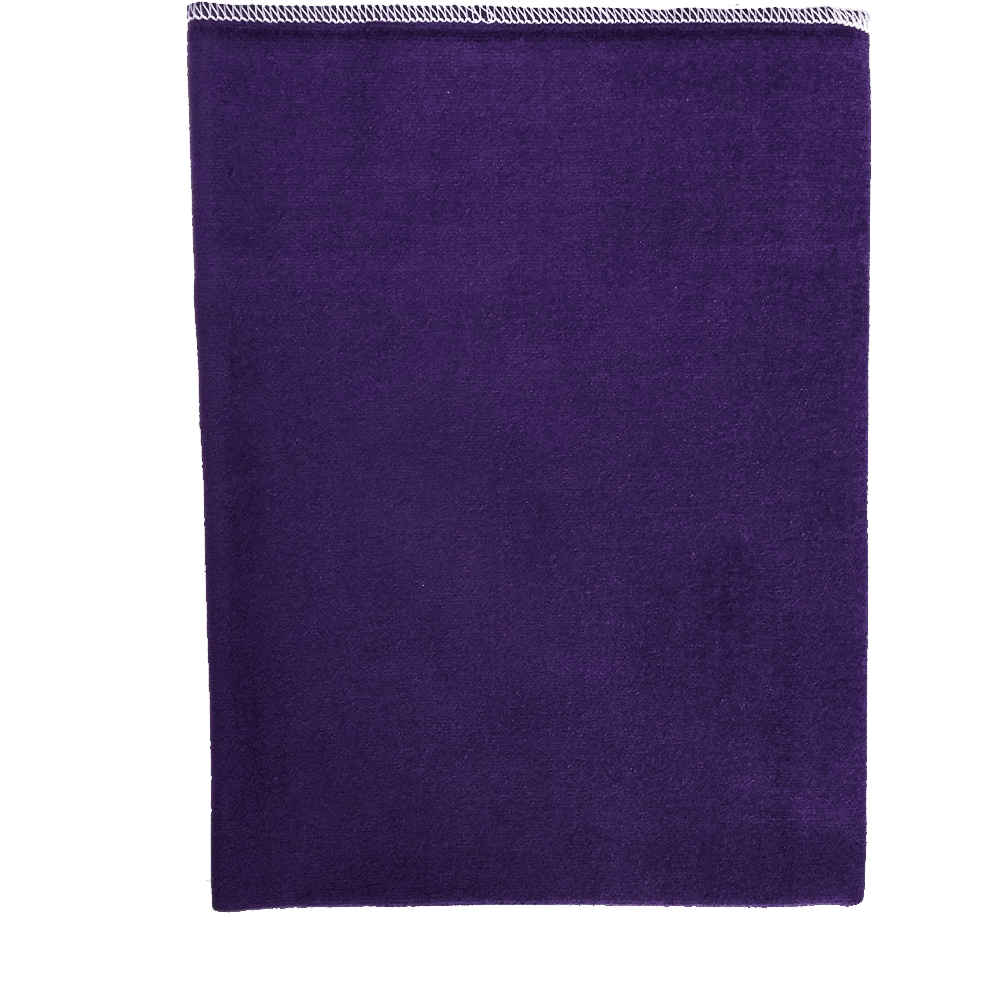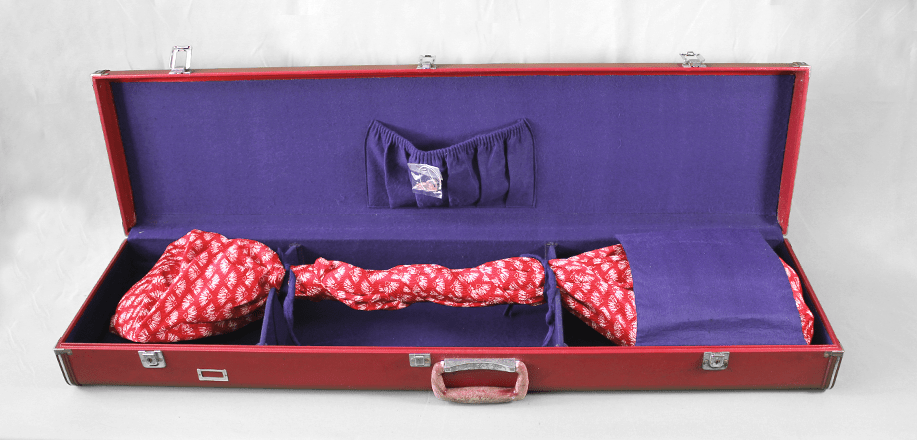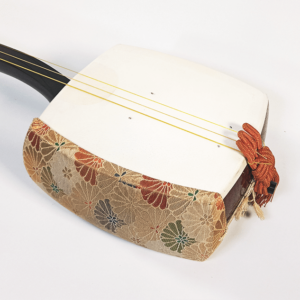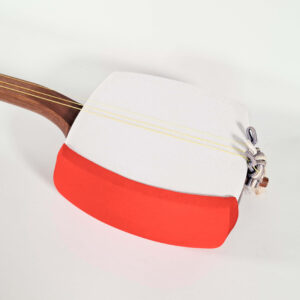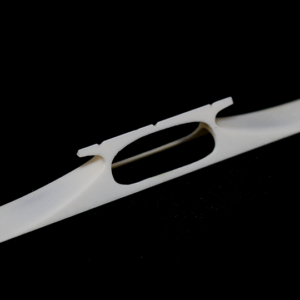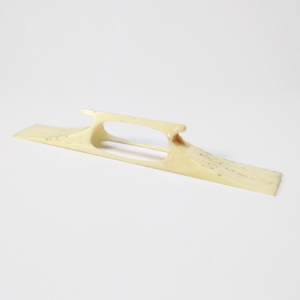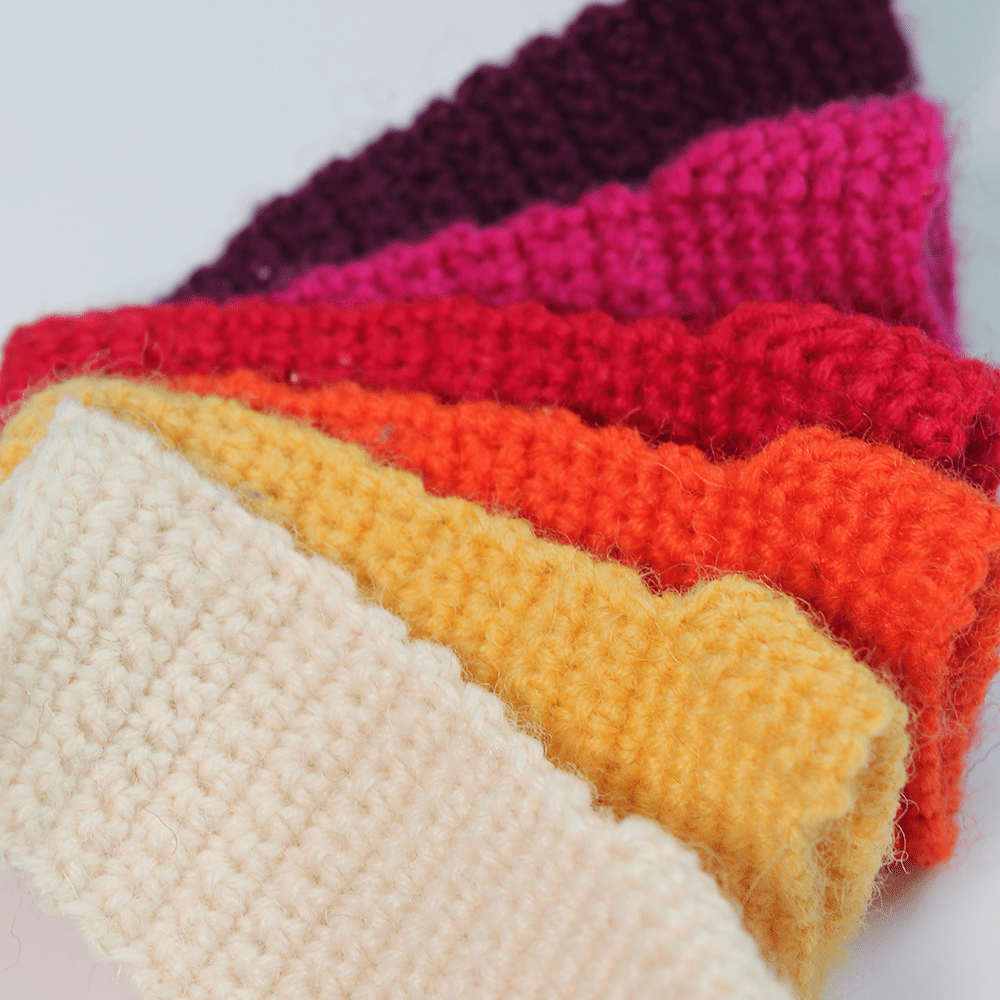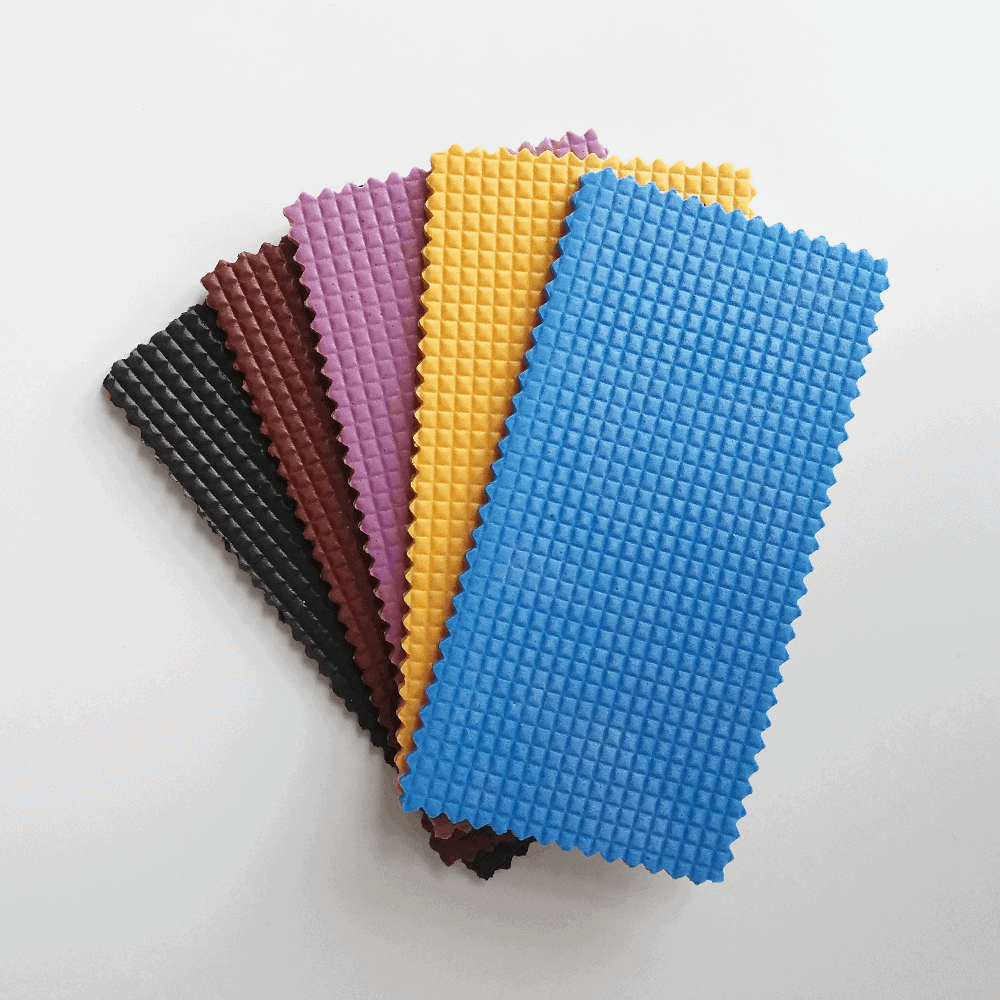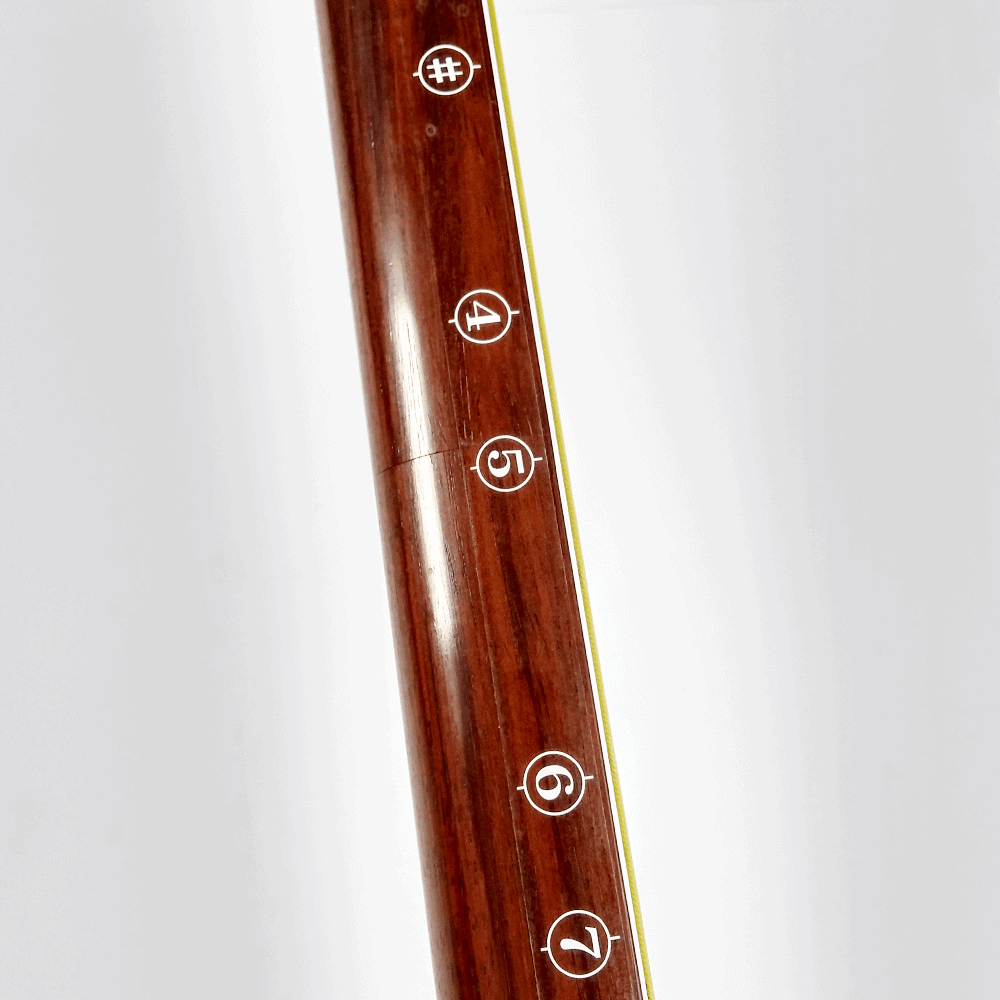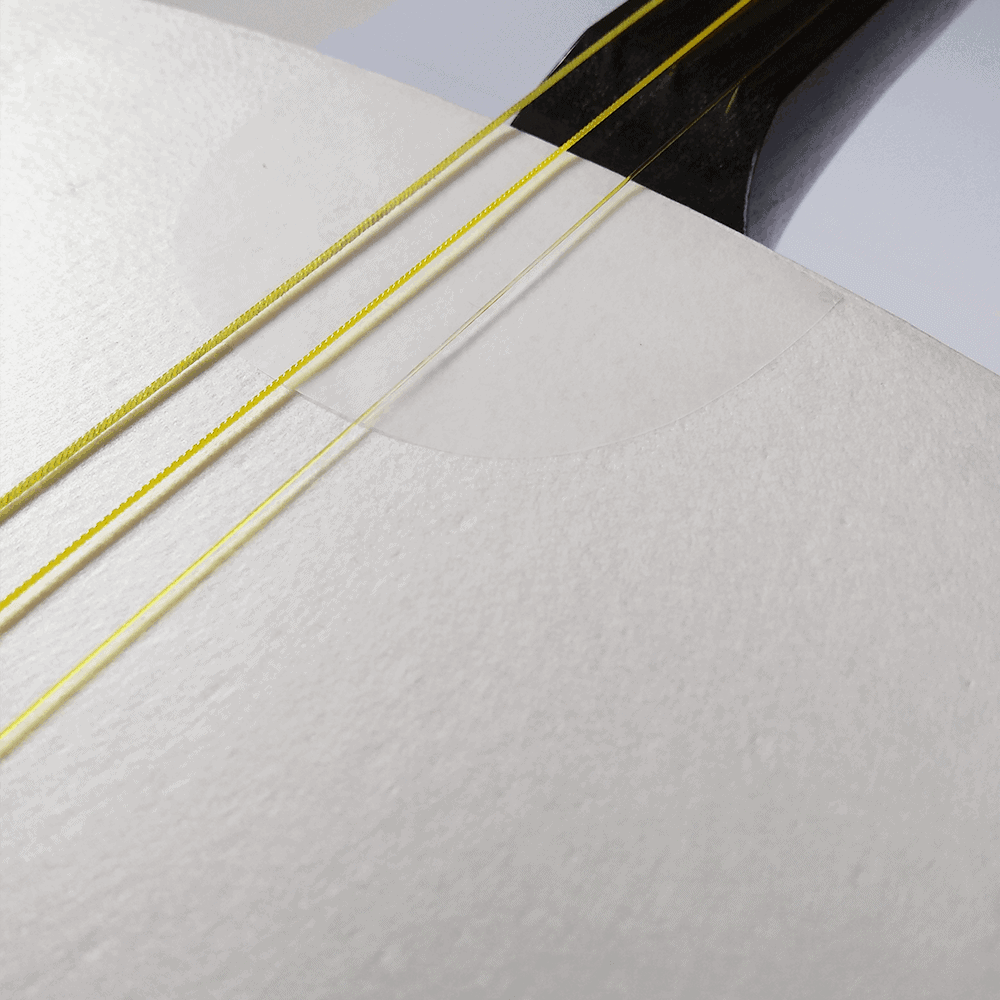Theater and Dance
Nagauta developed as a style directly connected to stage performances. It developed as its own genre in this environment. When the shamisen was introduced to kabuki theater accompaniment, it was still considered Jiuta Shamisen in the beginning, before it developed into its own genre eventually: Nagauta.
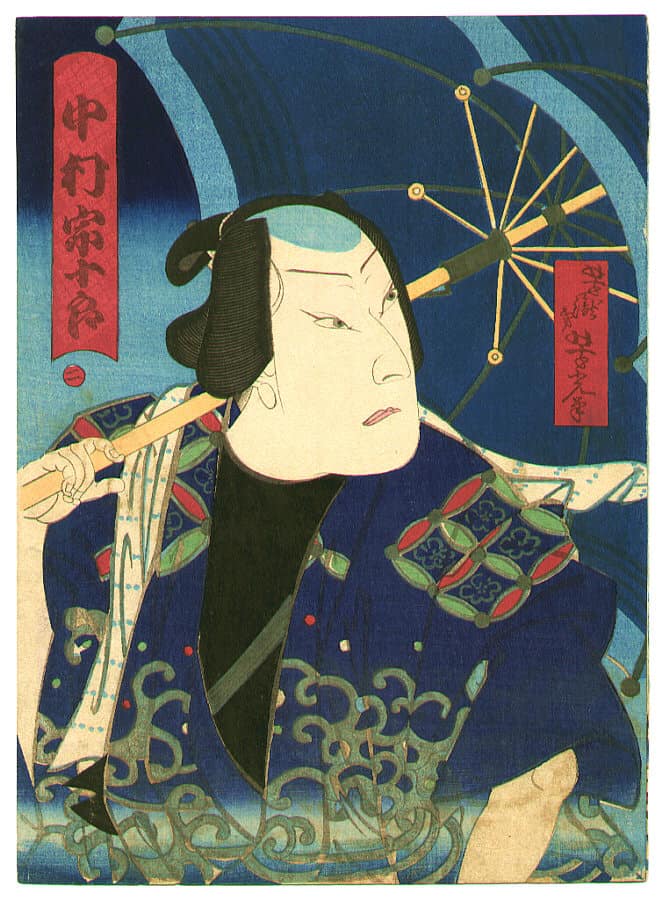
Size
The shamisen for Nagauta style is a bit smaller, but the neck has the same length. The slender neck (hosozao) ends in an elegantly slanted curve before it dives into the sound box. The sound box is smaller than for other styles and has a slightly thinner frame. The sawari (buzz) follows the same mechanism as jiuta shamisen: it is created by lowering the thick string – the kamigoma is shortened and the thick string is nestled in a little groove in the wood. That’s called yama sawari in comparison to azuma sawari. The skins are stretched not too tightly to create a sound that doesn’t stick out too much in an ensemble.
Bachi and Koma
The Nagauta bachi is medium-sized, about the same size as Minyo bachi. The traditional bachi for performances is made from ivory. Practice bachi are made from plastic or wood. The wooden bachi usually have weights worked into their sides to provide for a comfortable swing. For Nagauta Shamisen, the strings are rather plucked than struck, compared to the percussive Tsugaru Shamisen style.
Instruments for NAGAUTA Style
Showing all 15 results
Bachi
Showing all 5 results
KOMA
Showing all 10 results
SCORES
Showing all 4 results
OTHER ACCESSORIES
Yubisuri
Ever enjoyed sliding over a hardwood floor in wool socks? Using the Yubisuri will bring you the same satisfying sensation when darting up and down your shamisen’s neck. starting at 12,00 €
Dougomu
Stop your shamisen from sliding off your lap while playing with this adhesive rubber mat. Non-adhesive options available, too. 6,00 €
Fujaku Strip
Mark the positions along your shamisen’s neck with this hand position marker. You can also just mark a couple of positions with individual markers. 8,00 €
Bachigawa
Protect your skin with this adhesive protective clear sticker. The extra layer is a good idea if you have a rougher playing style. 1,00 €
What else shall I get?
When you have covered all the basics you need to actually play the shamisen, you might want to level up on some accessories such as a new doukake or a different neo, to make your shamisen look more like “you”. But to make sure your shamisen stays as pretty and happy as it is for as long as possible, I recommend getting some items to keep your shamisen safe and beautiful first.
Protection and Care
The most important thing to protect is the shamisen’s skin. If you have a shamisen with natural skins, you protect the dou from humidity with a washi bag. The next layer of protection – and pleasing to the eye, too – is a soft sleeve to wrap your shamisen in. If you ever want to transport your shamisen farther than from your living room to your balcony, I highly recommend getting a hardcase or at least a softcase/gigbag to get your shamisen safely from A to B. Please make sure you always remove the koma after you’re done with playing to take the pressure off the skin. Give the neck a quick rub with a soft cloth or a tsuyafukin and you’re shamisen is ready for its beauty sleep!
